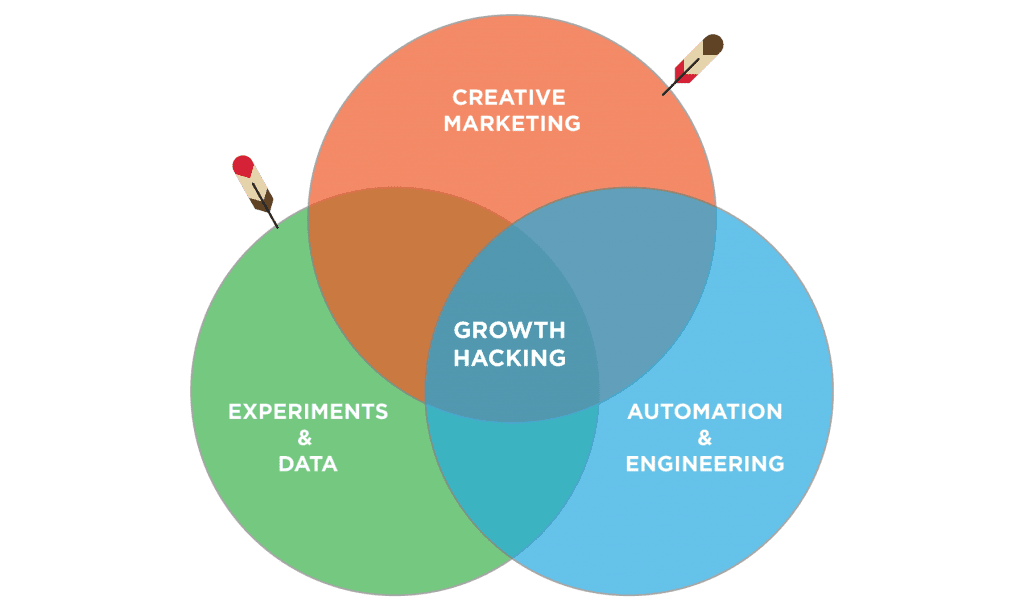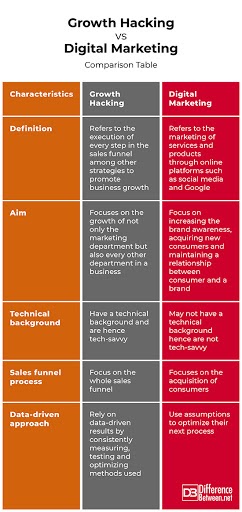What’s growth hacking? And is it evil?
The recent Netflix documentary “The Social Dilemma” portrays growth hacking as an evil tool wielded by tech giants. Is that really the case?

The recent Netflix documentary “The Social Dilemma” portrays growth hacking as an evil tool wielded by tech giants. Is that really the case?

We’re guessing you’ve heard of “The Social Dilemma” by now. It’s a documentary-drama hybrid on Netflix that’s got a ton of press and online chatter recently.
If you haven’t, it tells a horror story about how social media creates political extremism and drives children into depression and addiction. There’s a whole host of former executives from companies like Facebook and Twitter to make the point.
Amongst all the emphatic statements, it’s possible to miss the references to growth hacking.
In one scene, a former VP at Facebook, Chamath Palihapitiya, explains that there’s an entire field of study known as ‘growth hacking.’ It aims to delve into human minds and their psychology for the purpose–you guessed it–growth in a company’s customer base.

If you walk away from the film with no prior knowledge of the term, you’re likely going to have a negative view of the term.
As a SaaS company with a team of marketers focused on growth, here are some thoughts on what we think growth hacking is and whether it’s deserving of a bad rep.
In “The Social Dilemma,” growth hacking is a method by which organizations keep ‘hacking’ away at the user’s psychology in search of more engagement.
The documentary even refers to social media users as human lab rats, whose every click, scroll, and hover is painstakingly studied.
The end goal is to figure out how to get people to spend longer on these platforms, to have more data, and, subsequently, more advertisers.
The classic definition of growth marketing is not a million miles off: it’s an approach to marketing that combines classic techniques with data and technology. The focus is on running experiments in a process-based manner to grow the number of customers.

If you’re wondering how that’s different from the role of a run-of-the-mill modern marketer, you’re not alone.
There are a ton of comparison tables out there to explain the differences. Here’s one that captures their general themes quite well.

We’re skeptical that these still apply. It’s possible ten years ago that marketers focused solely on top-of-the-funnel activity and growth hackers on the entire customer journey.
But since 2014, marketers rely much less on a funnel framework. Beyond the no longer linear buying process, many people also argue that customer retention is the new conversion.
Plus a non-data-driven marketer is a little akin to the dodo. (The problem in marketing is not that people make decisions based on assumptions–it’s that people are too chained to data.)
Finally, while not all digital marketers have a technical background, tech-savviness is a requisite. The tools to learn languages like Javascript and SQL are also widely available and increasingly listed in job specs.
All this to say that a growth hacker and a generalist marketer aren’t that different in today’s funnel-less, data-driven, technology-powered, and customer churn-obsessed environments.
When people watch Don Draper in the television series Mad Men, they mostly think of the craft involved in his campaign pitches. Here’s Draper masterfully using nostalgia to sell photo projectors.
There are several articles out there with titles like, “Don Draper Is Dead: Why Growth Hack Marketing is Advertising’s Last Hope.” We don’t believe that this is the case. The idea of influencing people to make a decision based on emotions hasn’t gone anywhere.
Instead of TV campaigns dreamed up in smoke-filled rooms, the difference is that data guides more decisions advertisers and marketers make. The end goal is still to influence purchasing behavior.
If this data and insight are used to narrow cycling’s historic gender participation gap, it’s hard to argue that it’s a bad thing. On the flip side, using data to influence elections in the Caribbean is not good.
If growth hacking is a tactic you use to grow your customer base and improve engagement with your product, we don’t think it’s a force for evil.
For example, what’s problematic about showing two different website visitors a different headline to understand what resonates with your audience best?
In the end, better communicating what you do is beneficial to both your business and your website visitors.
In this light, growth hacking is an evolution in response to marketers’ tools and resources these days. Like many things, whether it’s a force for good or evil depends on how it’s used.
If you’ve followed along so far, we’ve done our best to:
There’s no doubt that a “growth at all costs” approach is a gamble, and it’s hurt many companies.
Any business that loses its customers’ trust faces significant backlash. Early pioneers of aggressive growth hacking like Facebook have seen a shrinking number of users, particularly in the coveted 12-to 34-year-old demographic.
The lesson in all this? Sustainable growth comes from putting your customer’s best interests first.
It’s a relief to know that some things never change.
Drew Wilkinson is the Head of Marketing at SimpleTexting. Drew has more than a decade of experience managing successful integrated marketing programs to build brands, raise awareness, and generate demand.
More Posts from Drew WilkinsonWe reached out to seven digital marketers across different industries to find out where email marketing fell short for them and what you can do about it.
ReadAuto repair marketing isn't limited to traditional media. Learn how to set your shop apart with seven marketing strategies you can begin employing right now.
ReadStart a text marketing campaign or have a 1-on-1 conversation today. It's risk free. Sign up for a free 14-day trial today to see SimpleTexting in action.
No credit card required